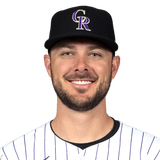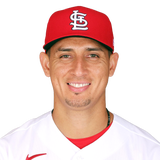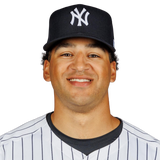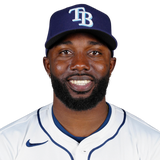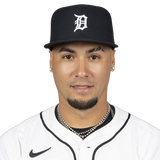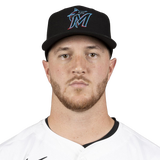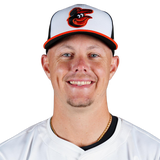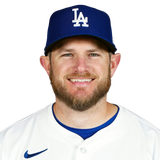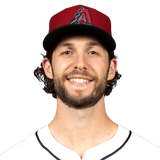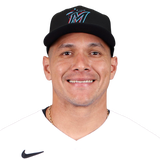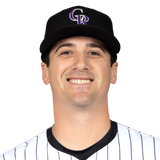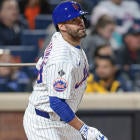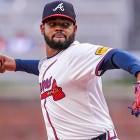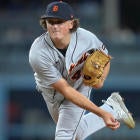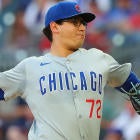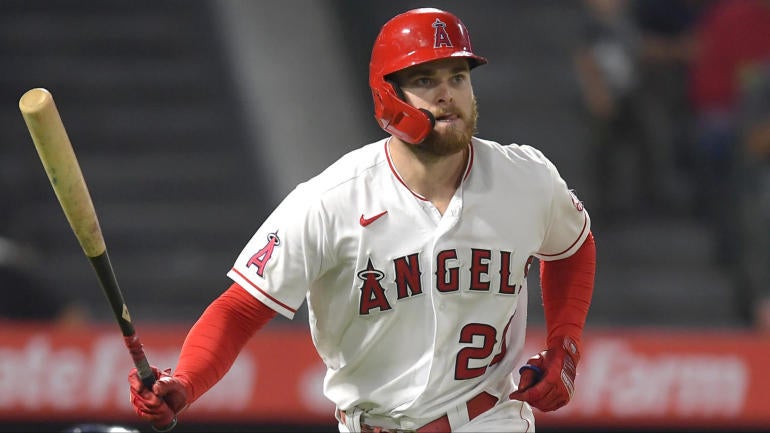
There's danger in misconstruing what a "bust" is. The connotation is intensely negative, conjuring feelings of impending disaster. which is why I've made a point in recent years not to use this space to highlight mere ADP inefficiencies. Why apply so harsh a label for what's only a mild concern?
- Frank's Sleepers 2.0 | Chris' Breakouts 2.0
- Scott's Sleepers 2.0 | Scott's Breakouts 2.0
Instead, my goal here is to highlight players with true bottom-out potential, ones for whom the disaster scenario requires little imagination. It doesn't mean it's the expected scenario or even the most likely one, but it's plausible, which should at least make you think twice about drafting them at their going rate.
I'm not necessarily saying you should avoid them at all costs, but you need to know what you're getting into.
We'll begin with some new names before reiterating those from Busts 1.0.
-The Newcomers-
Kris Bryant, 3B/OF, Free Agent
| ||||||||||||
One of the more curious aspects of Bryant's career is that he's never impacted the ball like you'd expect a power hitter to. Only in his first two seasons did he rank in the upper half of the league in average exit velocity. His highest percentile rank in the five years since has been 30th. He could get away with it during the juiced ball era, when seemingly anything put in the air had a chance to get over the fence. He was a hitter perfectly suited for that time.
But that time is over, as you may have heard. A deliberate change in the manufacturing process has robbed the balls of their juice. The new ones don't carry as well, and the effect could be even more pronounced this year as more of the old balls are flushed out. Bryant's career has mostly coincided with the juiced ball era. The little bit that came before it was also when his exit velocities were at their highest. As such, we don't know exactly how the numbers will translate over the long haul. Some of the biggest decliners in home runs last year were players that previously succeeded in spite of middling exit velocities: Anthony Rendon in the 45th percentile, Alex Bregman in the 43rd percentile, Michael Conforto in the 35th percentile, etc. Bryant ranked lower than all three.
Maybe last year showed us he'll be able to navigate this new landscape well enough, but the data certainly raises red flags. Particularly if he doesn't sign with the Rockies or some other team situated to maximize his fly-ball tendencies, I'd rather someone else take the risk. The reward is merely so-so anyway.
Jesse Winker, OF, Reds
| ||||||||||||
Winker had previously shown us flashes of what he finally delivered on last year, sustaining near-elite production for a solid 4 1/2 months before an intercostal strain more or less ended his season. A disciplined hitter with line-drive tendencies, he's a good bet for batting average and a better bet for OBP. His 3.70 Head-to-Head points per game last year ranked behind only Fernando Tatis, Juan Soto and Bryce Harper among outfielders with as many at-bats as him. And yet ...
There are some warts that have me thinking it's a trap to buy into everything he did last year. The most obvious is his propensity for injury. He has yet to play even 115 games in a season, with last year's 423 at-bats representing a career high. But it happens, right? He owes his absences to one big injury every year rather than a series of nagging ones, so maybe that particular concern is overblown.
But it's not even the biggest, as far as I'm concerned. No, the real problem for Winker is he can't hit left-handed pitchers -- like, at all. For as good as he was last year, he batted .177 with a .572 OPS against them as compared to .188 with a .600 OPS for his career. Does it really make sense for manager David Bell to run him out there every day? Winker is already 28, so it wouldn't be for developmental reasons.
The drastic splits not only present a playing-time risk but also require Winker to be uncommonly good against righties. Is the .346 batting average he delivered against them last year really sustainable? I want to say his 2021 was the start of something special, but thinking logically, it may have been the high-water mark.
Jared Walsh, 1B, Angels
| ||||||||||||
I already mentioned the problem with middling exit velocities in Kris Brant's case. Walsh fits squarely in that category, placing in the 55th percentile for average exit velocity last year. He managed to break out in spite of it, but it was a bumpy breakout that saw his strikeout rates and power output fluctuate wildly from month to month. In the end, he hit only seven of his 29 home runs in the second half.
That's a problem because his entire profile is dependent on home runs. He isn't a disciplined hitter. He doesn't steal bases. He has nothing to fall back on if he's not homering at a prolific rate. And perhaps even more concerning than his quality of contact is that he doesn't elevate like a home run hitter, his fly-ball rate last year placing in the bottom 20 percent of qualifiers. So what should you make of a ground-ball hitter with suspect exit velocities playing in the most pitcher-friendly division in baseball? I'd bet you he's not a great bet for home runs.
Not surprisingly, Walsh's .257 xBA and .436 xSLG were both well below his actual .277 and .509 marks. My concerns for him are nearly as great as for another first base bust pick of mine, Ryan Mountcastle (see below). With Rhys Hoskins, Josh Bell, C.J. Cron and Joey Votto all going a round or two later on average, there's just no way I'm drafting either.
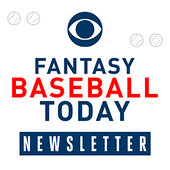
Fantasy Baseball Today Newsletter
Your Cheat Code To Fantasy Baseball
You're destined to gain an edge over your friends with advice from the award-winning FBT crew.
Thanks for signing up!
Keep an eye on your inbox.
Sorry!
There was an error processing your subscription.
Giovanny Gallegos, RP, Cardinals
| ||||||||||||
My concerns for Gallegos have nothing to do with ability. He's the Cardinals' best reliever and has been for each of the past three years ... which is why I feel like I've seen this movie before.
They've had every excuse to elevate him to the closer role during that time. In 2019, their intended closer, Jordan Hicks, fell victim to Tommy John surgery. Move the setup man into the role, right? No. Instead, they opted for converted starter Carlos Martinez. In 2020, the pandemic-shortened season, Gallegos was sidelined early for pandemic-related reasons. Nobody secured the closer role in his absence, but when he returned, he wasn't given regular save chances either, instead being flexed between the seventh, eighth and ninth innings. In 2021, the Cardinals didn't bring in anyone new to close but instead gambled on former prospect Alex Reyes, whose lack of durability is exceeded only by his lack of control. When it inevitably fell apart, only then did the Cardinals resort to Gallegos, who recorded 11 of his 14 saves in September alone.
When backed into a corner, they've shown they'll use the right-hander in the closer role, but it's obvious they prefer him bridging the gap between the starter and the closer, sometimes even over multiple innings. I don't know exactly who the Cardinals will turn to in the ninth inning instead -- Hicks is healthy again, so maybe him -- but if anyone gives them an excuse, I suspect they'll take it.
Trent Grisham, OF, Padres
| ||||||||||||
I've been harping on exit velocity quite a bit here in Version 2.0, and in the cases of Kris Bryant and Jared Walsh, I'll admit that my concerns are mostly theoretical. But we've already seen the devastation wrought by Grisham's 38th percentile average exit velocity, and it's hardly deterred anyone. I suspect most view it as just a blip. After all, he was on more like a 25-homer pace during the pandemic-shortened 2020, his first extended look in the majors, and his batted-ball profile was largely unchanged last year. He has a good eye at the plate and elevates the ball well enough, so why can't he hit more home runs?
But that's an outdated way of thinking. A player doesn't have to change at all to suffer from the new ball. The ones most at risk are the ones who don't impact it as hard. What may have been enough to send it over the fence before is now likely to land in a fielder's glove. As such, Grisham's ability to elevate may only be serving to suppress his batting average.
His xSLG last year was a pitiful .368 compared to .484 in 2020, so the Statcast readings only validate my concerns. And what's worse is his shortcomings only became more pronounced as the season dragged on. Over the final four months, Grisham hit .218 with a .675 OPS. By the end, he wasn't even an everyday player anymore. I think people are willing to see the glass half full because of his speed and plate discipline, but he looks totally spent to me.
-The Holdovers-
Marcus Semien, 2B/SS, Rangers
| ||||||||||||
FantasyPros ADP: 33.6
The chances of Semien living up to a season that saw him set a record for home runs by (primarily) a second baseman were always slim. Statcast marked him as one of the biggest overachievers, his .244 xBA and .453 xSLG paling in comparison to his actual .265 and .538 marks. And then there's the matter of track record. Two of the past three years have been good enough to earn him a top-three finish in AL MVP voting, his .892 OPS in 2019 outshining even last year's .873 mark. But in between was a .679 OPS, and for every season before 2019, he had no better than a .735 OPS.
What really clinches his place here, though, is his decision to sign with the Rangers. It's hard to overstate how much batting in the heart of a lineup that included Vladimir Guerrero, Bo Bichette, George Springer and Teoscar Hernandez bolstered his numbers. Going from the third highest-scoring team to the third-lowest could cost him a combined 20-40 runs and RBI -- and that's presuming his other numbers remain the same. Again, a repeat season was always a stretch, but now he's going from a division full of hitter's parks to one full of pitcher's parks, with the Rangers' own leaning that way so far in its history.
It's just too many risk factors stacked on top of each other, particularly for the cost of a third-round pick.
Nick Castellanos, OF, Free Agent
| ||||||||||||
FantasyPros ADP: 58
I may be getting a little ahead of myself here, not knowing yet where the free agent will ultimately land, but the point is that the destination could be everything for Nick Castellanos. It was his move out of Detroit, remember, that first put him on the breakout trajectory, and his home/away splits with the Reds last year further demonstrate how much his numbers are tied to his venue. He hit .359 with 23 homers and a 1.109 OPS at Great American Ballpark vs. .260 with 11 homers and a .772 OPS everywhere else.
This may be one instance where I'm challenging what it means to "bust," because I do think the bottom-out potential for Castellanos is fairly low. His line-drive stroke should keep his batting average respectable, and even in his Tigers days, he was good for 25 homers or so. But that's a far cry from the 34 he just hit. If his new venue takes him back to being the .280-hitting, 25-homer, .800-OPS guy he once was, then he's a more suitable pick in the 10th round than the fifth, where he's currently going. Naturally, if he signs with another team that plays in a small park, the calculation will change.
Randy Arozarena, OF, Rays
| ||||||||||||
FantasyPros ADP: 58.2
I mentioned Marcus Semien was one of the biggest overachievers as far as Statcast is concerned. The single biggest was probably Arozarena, whose expected batting average was only .220 and expected slugging percentage was only .366. You don't need me to tell you those are some awful numbers, and while it's possible he's one of those rare exceptions who breaks the formula, I'm not ready to declare it after just one season.
Truth is the more I look into him, the more warning signs I see. His 28.1 percent strikeout rate was 14th-highest among qualifiers, and the combined batting average for the 13 ahead of him was .235. The only one to deliver better than his .274 mark (Tyler O'Neill) had the benefit of 14 more home runs. Those are generally the best way to overcome a high strikeout rate, seeing as they produce a batting average of 1.000, but with the 19th-highest ground-ball rate among qualifiers, Arozarena's swing isn't exactly geared for them.
And then there's the stolen bases. So much of his appeal is tied to the fact he reached the magical 20 threshold, but seeing as it was with only a 66.7 percent success rate, can we be sure the forward-thinking Rays will continue to give him the green light? And for that matter, can we be sure they'll stick with him every day if his production begins to slip? It's not exactly their MO.
Javier Baez, 2B/SS, Tigers
| ||||||||||||
FantasyPros ADP: 70
By now, Baez has a dedicated booth on my bust list. I keep waiting for the other shoe to drop, and it hasn't yet. But it will, by golly. It must.
My concern for him has always been his plate discipline. Generally, players who strike out as frequently and walk as infrequently as he does don't make for the most reliable Fantasy assets. He's managed to get away with it, at least so far, by consistently delivering some of the highest BABIPs and home run-to-fly ball ratios in all the game. We're talking outliers of a level that few players would be able to repeat year after year after year. Clearly, he has a propensity for them, but that sort of strain on the natural mathematics of the game leaves a narrow margin for error. There's no opportunity to correct up, only down.
Or so I thought. What's crazy, though, is that Baez struck out more than ever last year, 33.6 percent of the time, and still managed to deliver a quality stat line. How? By becoming even more of an outlier in BABIP and home run-to-fly ball rate, setting a career-high in each. The dam has to break at some point, right? Maybe his move to Comerica Park will precipitate it. We saw what the reverse move (from Comerica to Wrigley Field, I mean) did for Nick Castellanos a couple of years ago, and Baez similarly likes to drive the ball to right-center. That on its own could present a problem for him.
Jazz Chisholm, 2B/SS, Marlins
| ||||||||||||
FantasyPros ADP: 88
I'll admit I was impressed when Chisholm hit .311 with four homers, nine steals and a .969 OPS in April. As a prospect, he flashed tools but was extremely rough around the edges. I expected him to get buried alive by major-league pitchers, striking out too often to make a worthwhile contribution. Oh well, guess I was wrong.
Wait a second. He played another five months. And how did those go? Well, um, he hit .236 with a .681 OPS, sealing just 14 bases in 22 attempts. So he was buried alive for five-sixths of the season, but his hot start made the final numbers appear not as bad. Of course, even as things stand, they're not so great.
What are we doing here? Yeah, it's possible it all clicks for Chisholm this year, making for yet another stud shortstop, but is that a reasonable assumption given what we saw from him last year and throughout his minor-league career? I mean, he's going ahead of Bryan Reynolds, whose hitting profile is near unimpeachable. I think the fervor for stolen bases is so out of control right now that anyone with an expectation of 20 is being pushed way up draft boards. People, you only need so many.
Trevor Rogers, SP, Marlins
| ||||||||||||
FantasyPros ADP: 95.6
I'm going to catch some flack for this one. After all, look at what Rogers did as a rookie last year. Just because he was a rookie, though, doesn't mean we have no frame of reference. He was only a fringy prospect coming up through the minors and got knocked around pretty good in his seven-start debut two years ago. He showed the makings of a plus changeup, some good spin on his fastball, but nothing to get anyone too terribly excited.
So how did he unlock this new potential? His velocity went up a tick, and he gained more confidence in his breaking ball. The buzz began to build in spring training, and then he made good on it ... at first, anyway. But I don't like the way things played out for him down the stretch. His numbers over his final nine starts were, frankly, nothing special: a 3.76 ERA and 1.40 WHIP. His swinging-strike rate dropped to 11 percent during that stretch compared to 16 percent before it, and he averaged just 4.5 innings per start.
Maybe the Marlins were just playing it cautiously with him. Maybe his second-half bout with back spasms was more serious than his minimal IL stay would have us believe. Or maybe we have no clue how his new and improved arsenal will play over the long haul, or if it'll even hold up. If skepticism abounded, I'd play the optimist, but Rogers' current ADP suggests we're getting ahead of ourselves.
Ryan Mountcastle, 1B/OF, Orioles
| ||||||||||||
FantasyPros ADP: 111.8
I was prepared to call Mountcastle a bust based solely on where he's being drafted. I can't even begin to understand it. Yeah, he hit 33 home runs last year, but that's only one number. Adam Duvall hit 38 and is going 90 picks later. Plus, Mountcastle is in a terrible lineup, has no on-base skills and saw his strikeout rate swell to 27.5 percent last year. There's no indication he'll be of any help in anything other than home runs.
And who's to say he'll hit 33 of those again? He's below average in both exit velocity and hard-hit rate. His xSLG was only .458 compared to his actual .487 mark. Last year may just be the high-water mark for him in terms of power, which is particularly troubling since power is all he has right now.
That's the argument I was prepared to make, anyway, before the Orioles decided to do this:
These are all 30 ballparks, with the changes made to Camden in yellow. pic.twitter.com/eGpMNm9Q4p
— Andrew Perpetua (@AndrewPerpetua) January 14, 2022
Just like that, Camden Yards goes from being one of the most favorable venues for right-handed power hitters to maybe the single least favorable. Mountcastle hit 22 of those 33 home runs last year at home, so now the case against him is easy. What do the rest of his numbers look like if he makes it to only 20 homers, presuming no improvement in walks or strikeouts? Shoot, Jesus Aguilar's might be better.
Max Muncy, 1B/2B, Dodgers
| ||||||||||||
FantasyPros ADP: 112.6
Muncy was in the MVP discussion for the first two-thirds of 2021, and as a Fantasy analyst who came to maturity at the peak of the Moneyball era, I'll always have an affinity for his combination of power and plate discipline. So while I can understand the inclination to seize upon what appears to be a discount, I don't want to understate the extent of the risk here: Muncy might not play a single game in 2022.
His elbow is in bad shape -- worse than we were led to believe when the Dodgers were leaving the door open for a postseason return. Reported at the time to be a dislocation, Muncy revealed in the offseason that he actually has UCL damage -- and it's not healing as quickly as hoped.
There hasn't been any official talk of him needing Tommy John surgery, but that's the natural assumption whenever you hear the letters U-C-L, particularly absent any indicators of progress. Maybe spring training will relieve our concerns, but for now, I'd proceed with extreme caution.
Austin Meadows, OF, Rays
| ||||||||||||
FantasyPros ADP: 122
I realize his 2021 was already bad and 2020 even worse, but I fear now that at 26, Meadows may be on a path to total irrelevance. He made a name for himself with a 33-homer 2019, batting .291 with a .922 OPS, but of course, 2019 was the year that the juiced ball was at its juiciest.
His exit velocities are middling -- only the 48th percentile last year -- and those types of players seem to be the ones most impacted by the introduction of the new ball last year. It may not manifest so much in Meadows' home run total because he puts the ball in the air a ridiculous 53 percent of the time, but so many of those fly balls are going to fall short of the fence that he might not be able to muster more than a .234 batting average without a radical change in approach.
He may not get that chance. The Rays don't abide fools. They already don't trust him against left-handed pitchers, and they don't trust him much in the outfield either. As they break in new talent like Joshua Lowe and Vidal Brujan, Meadows could become just another cog in the machine.
Zac Gallen, SP, Diamondbacks
| ||||||||||||
FantasyPros ADP: 129.6
You know those concerns I expressed about Max Muncy's elbow? They go double for a pitcher, whose job requires him to put maximum strain on the ligament over and over again, 100 times in a night.
True, Gallen already made it back from the discomfort he was feeling beginning around May, but the cause was a sprain of his UCL. And he didn't look right after returning. From June 17 through the end of the season, a total of 18 starts, he had a 4.66 ERA and 1.32 WHIP. In the five starts prior to the injury, he had a 3.04 ERA and 1.20 WHIP, which is much more in line with what we were used to seeing from him. Most alarming, though, was the swinging-strike rate, which cratered to 8.4 percent in those 18 starts following the injury. It was at 12.1 percent in 2020.
That's always a red flag for me. Too often we've seen pitchers in his situation receive an all-clear only to limp along for months before finally resigning to surgery. Whenever such a pitcher experiences a sudden loss of effectiveness and there doesn't seem to be any other reason for it, you can feel confident that's the reason for it.
Avisail Garcia, OF, Marlins
| ||||||||||||
FantasyPros ADP: 174.4
American Family Field in Milwaukee has been making kings out of princes for years now, and the latest coronation was Garcia, who predictably delivered a career-high 29 homers in what turned out to be his only full season with the Brewers. LoanDepot Park, which is where he's going now, is on the opposite end of the pitcher/hitter spectrum. You saw the way Christian Yelich's career took off when he made the opposite journey a few years back. Miami is where home runs die.
That's especially true for a player whose home run production relies on a superlative home run-to-fly ball rate. Garcia simply doesn't put the ball in the air enough otherwise. His home run-to-fly ball rate ranked 12th among qualifiers last year. It was yet another career high.
The second-most home runs Garcia has ever hit in a season was 20 with the Rays in 2019. Their venue tends to favor pitchers as well (though not to the degree the Marlins' does), so that may be a more realistic outcome for Garcia, who's expected to be the focal point of the lineup, by the way. With on-base nothing Jazz Chisholm projected to bat in front of him and fellow Brewers fakeout Jesus Aguilar batting behind him, Garcia's counting stats could suffer across the board.
Cal Quantrill, SP/RP, Guardians
| ||||||||||||
FantasyPros ADP: 241.4
At least to this point, with only the truest of diehards contributing to ADP, Quantrill's going rate isn't so bad, really. Particularly in points leagues, where you can take advantage of his relief pitcher eligibility, I might take a flier on him myself just to see if he can continue to defy the odds.
But the point is he really defied the odds last year. He had a 2.89 ERA despite a 4.43 xFIP. Among pitchers with at least 125 innings, there was no bigger gap than that. And lest you think it was more a quality-of-contact thing than a matter of his strikeout rate (not good), walk rate (meh) or fly ball rate (also meh), note that his 3.92 xERA wasn't much better.
So how did he come about these numbers? Well, he stopped throwing his fastball so straight, instead relying on more of a cutter. The change came right around the All-Star break and led to a 1.94 ERA over his final 14 starts. Still, he had less than a strikeout per inning during that stretch. He also had a substandard swinging-strike rate and a 4.19 xFIP. The new look may have thrown hitters for a bit of a loop, but there's nothing here to suggest it's sustainable. The hope of him being one of those weird and wacky exceptions merits only a late-round look.








